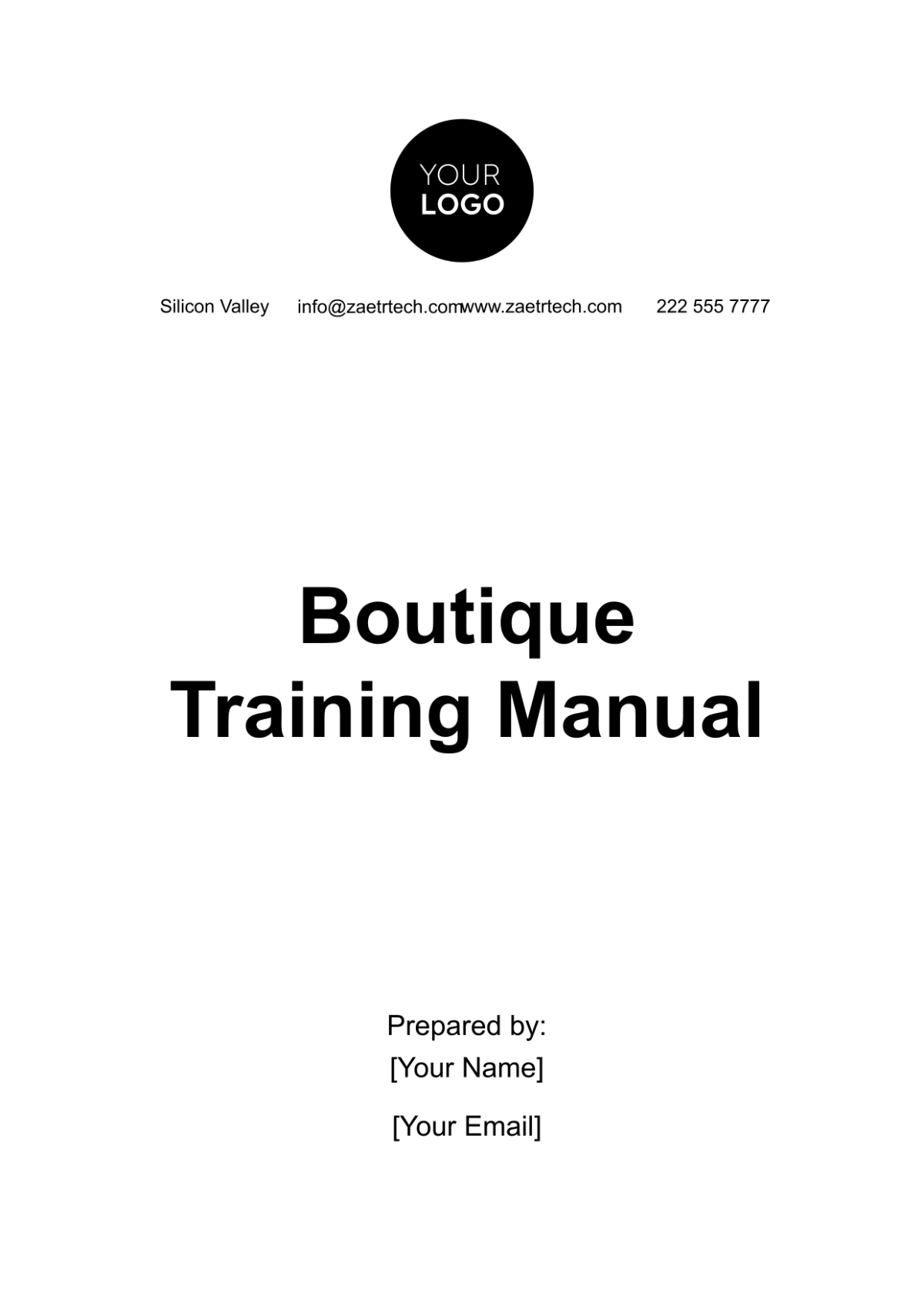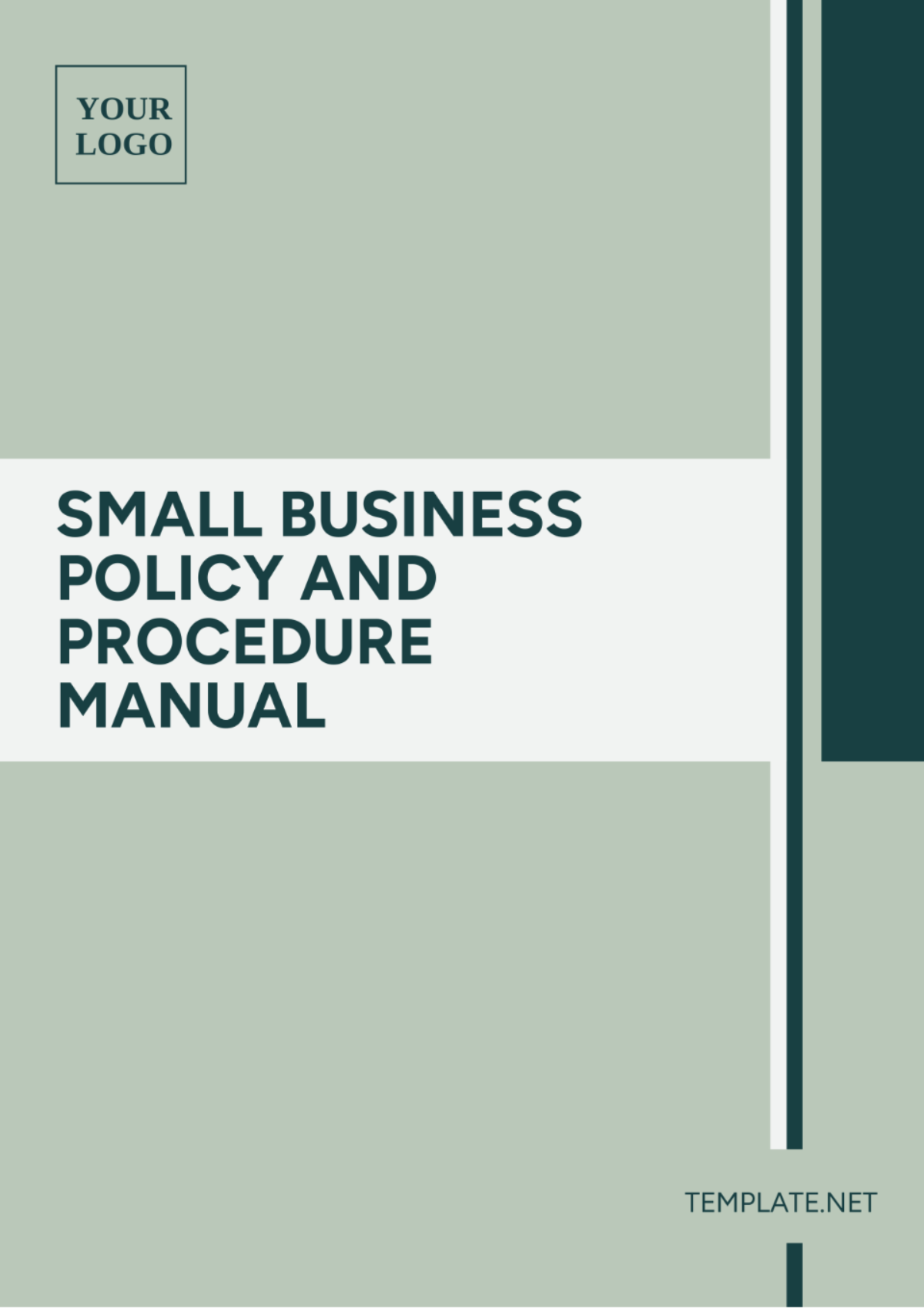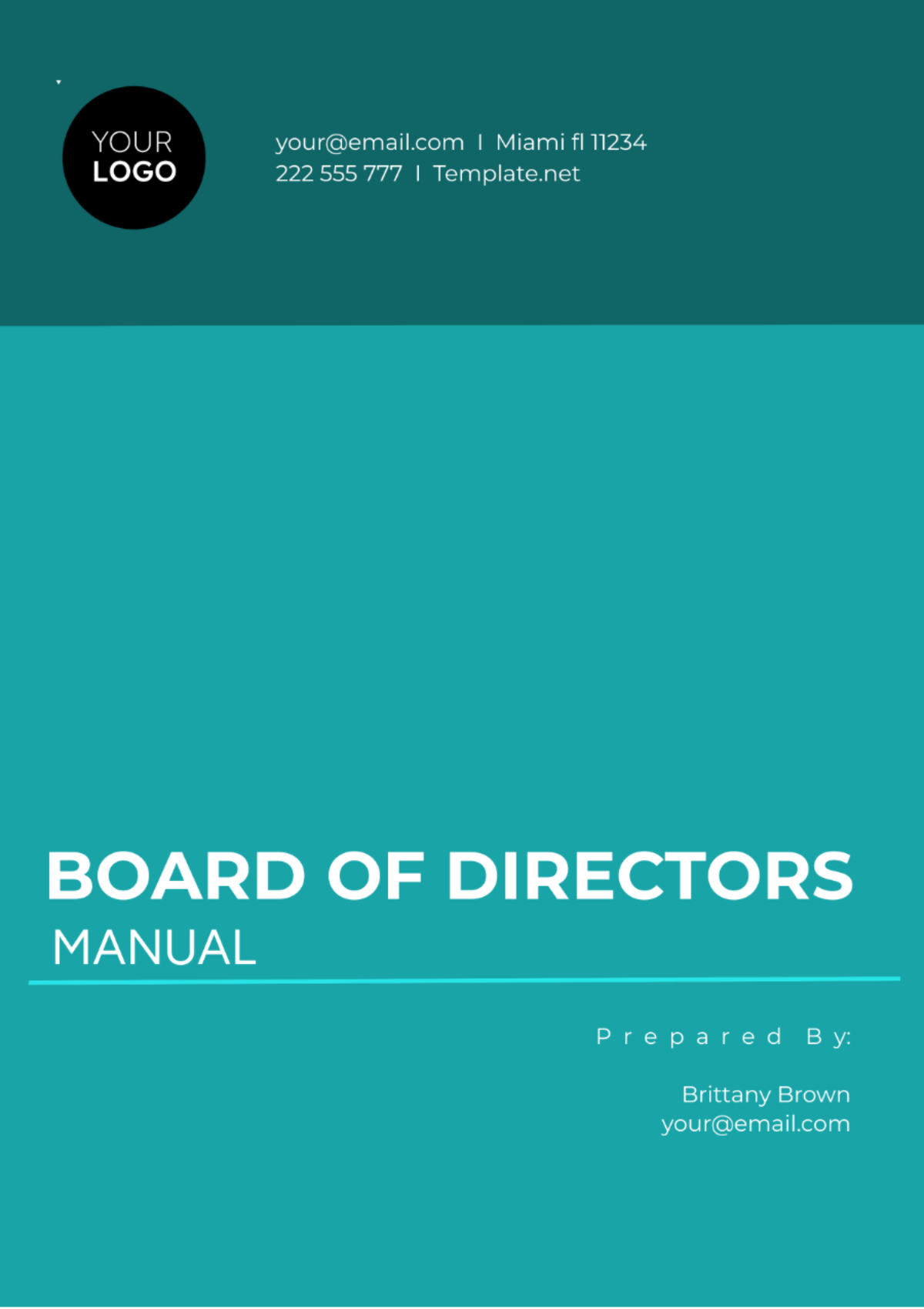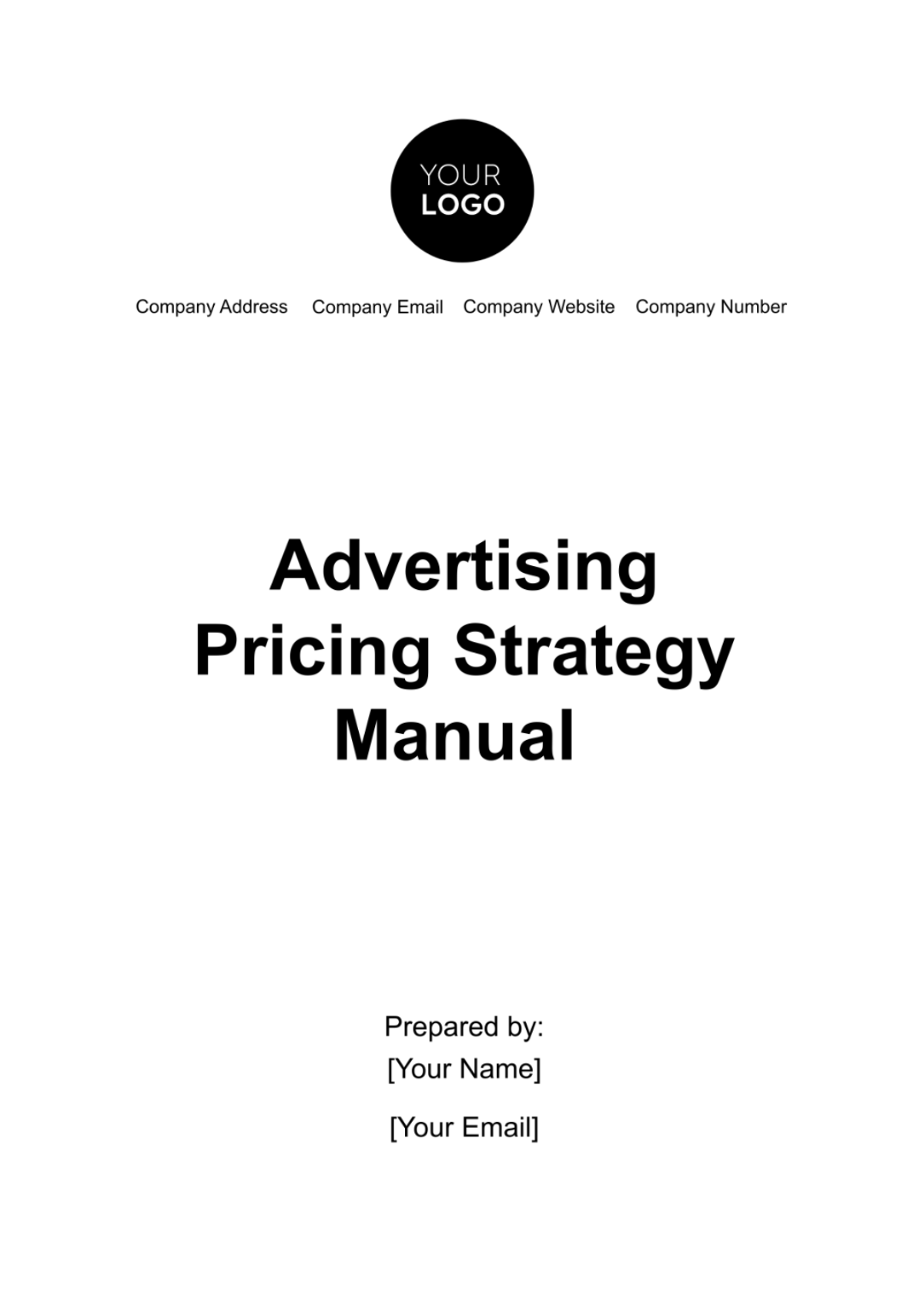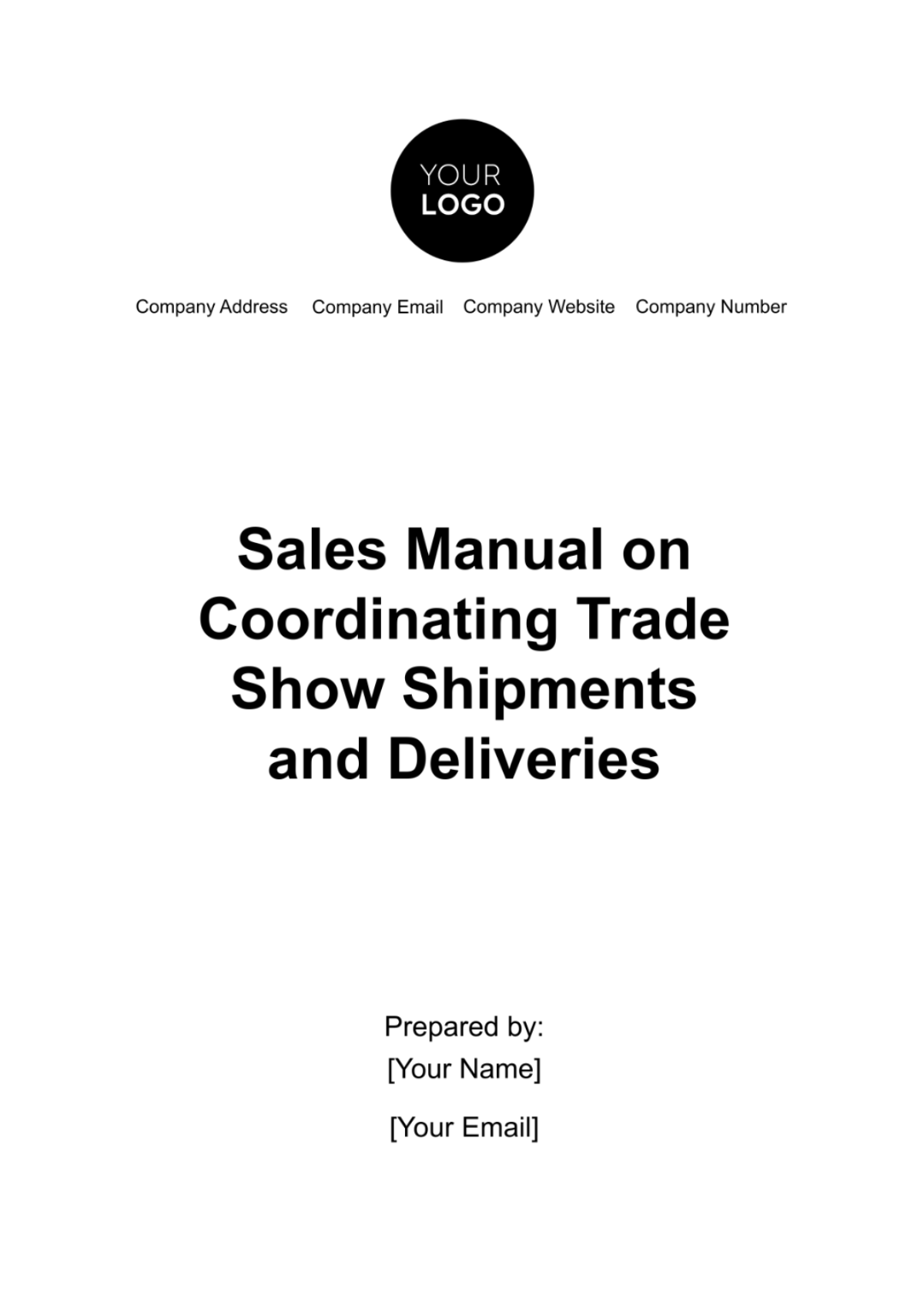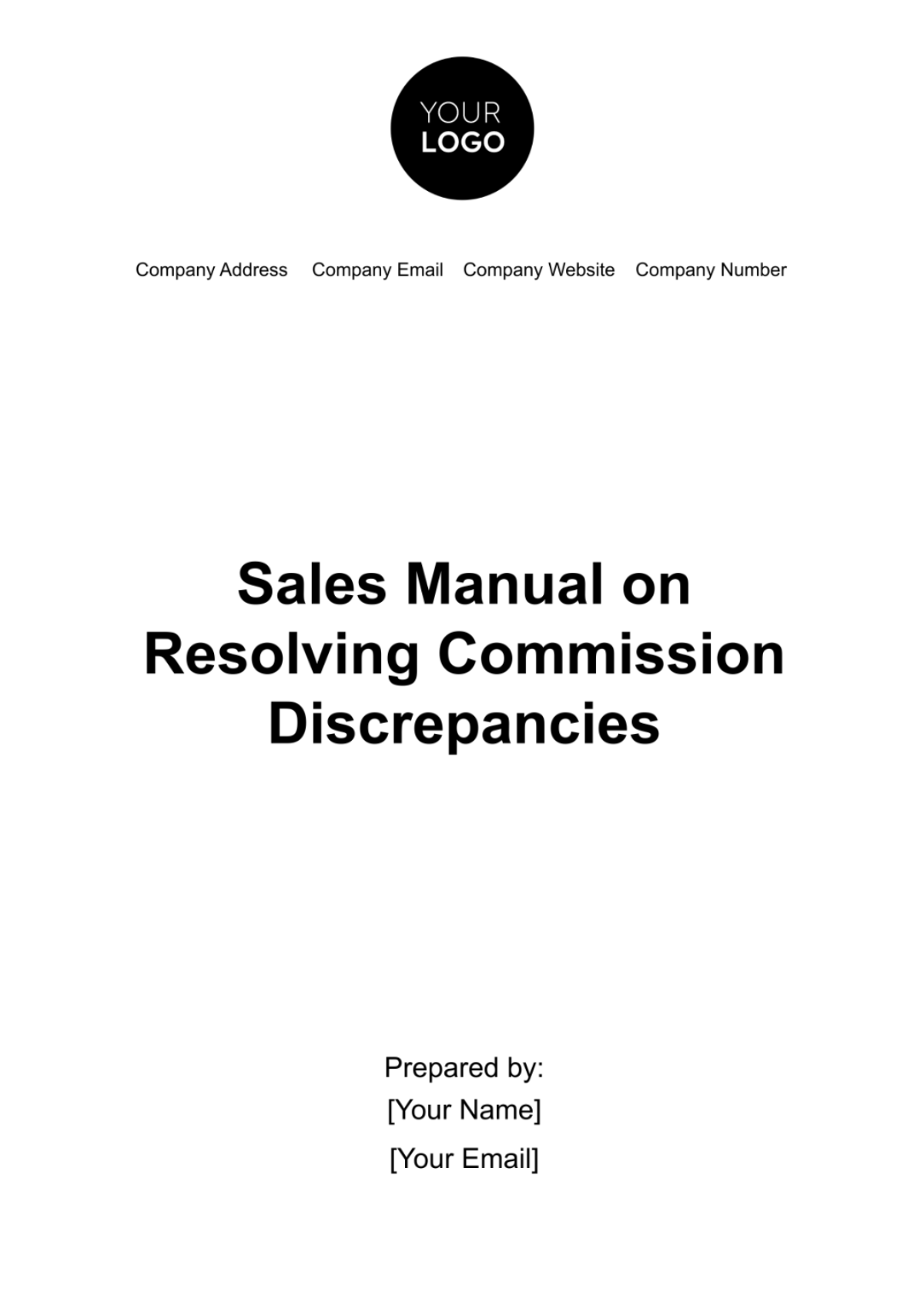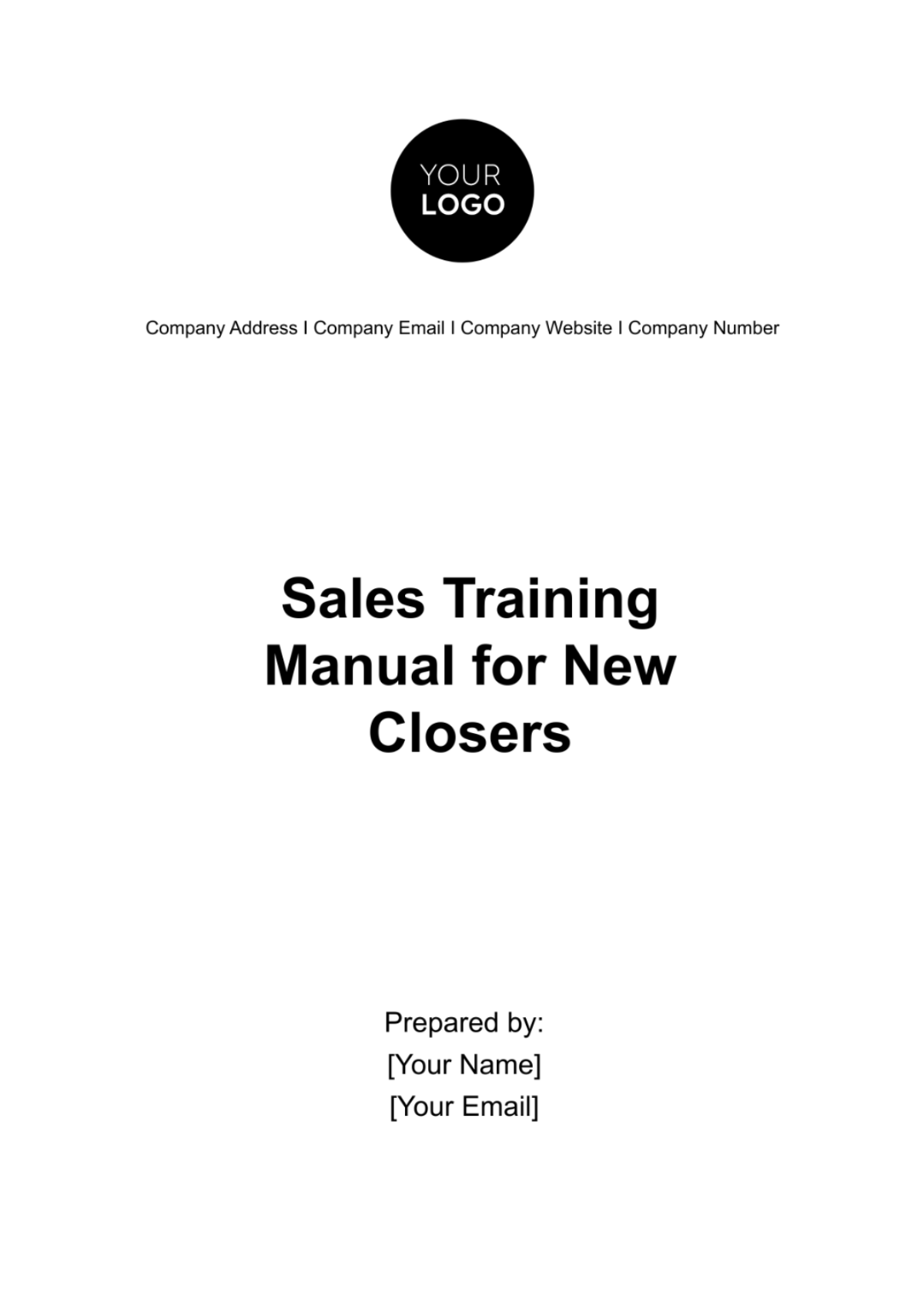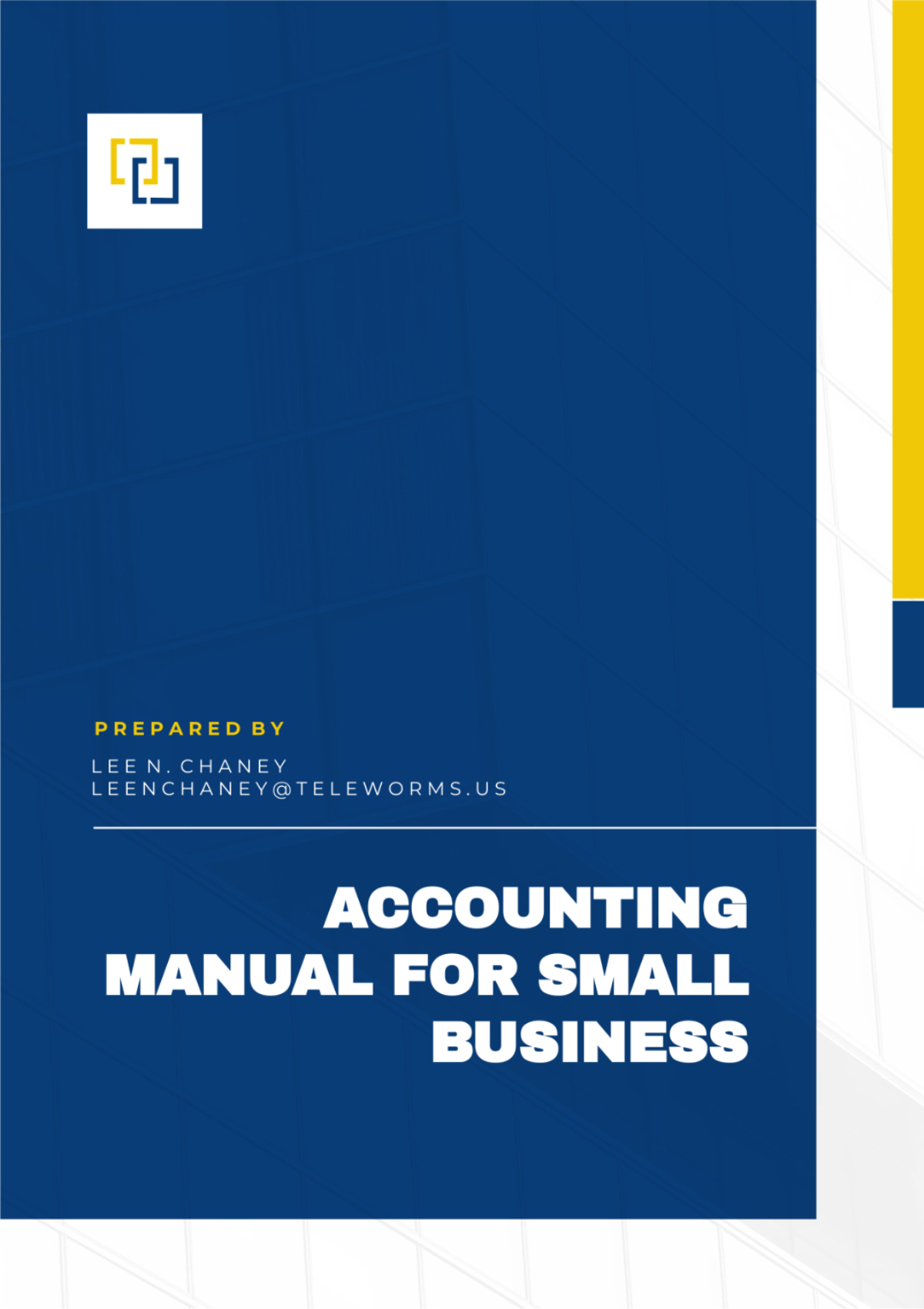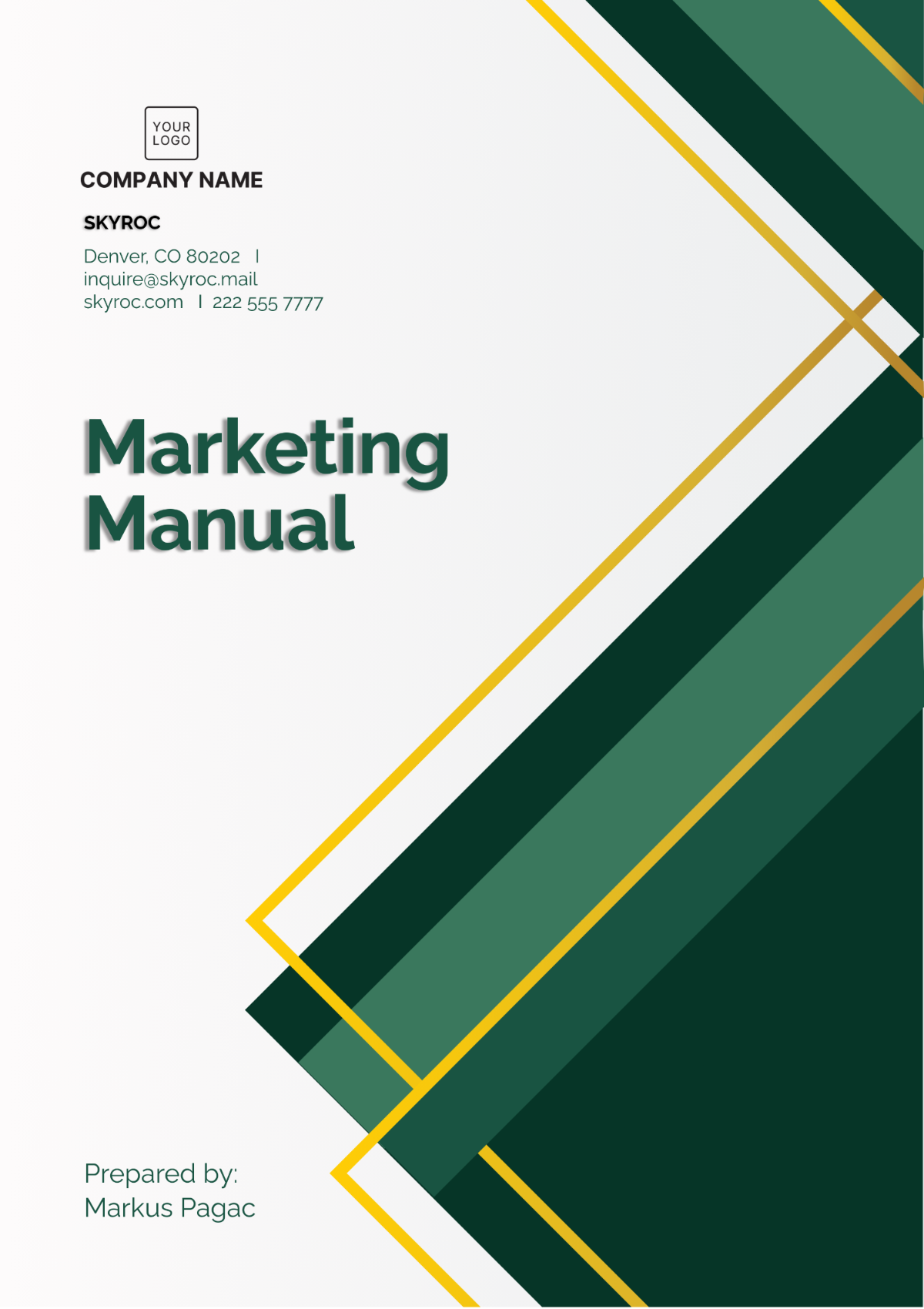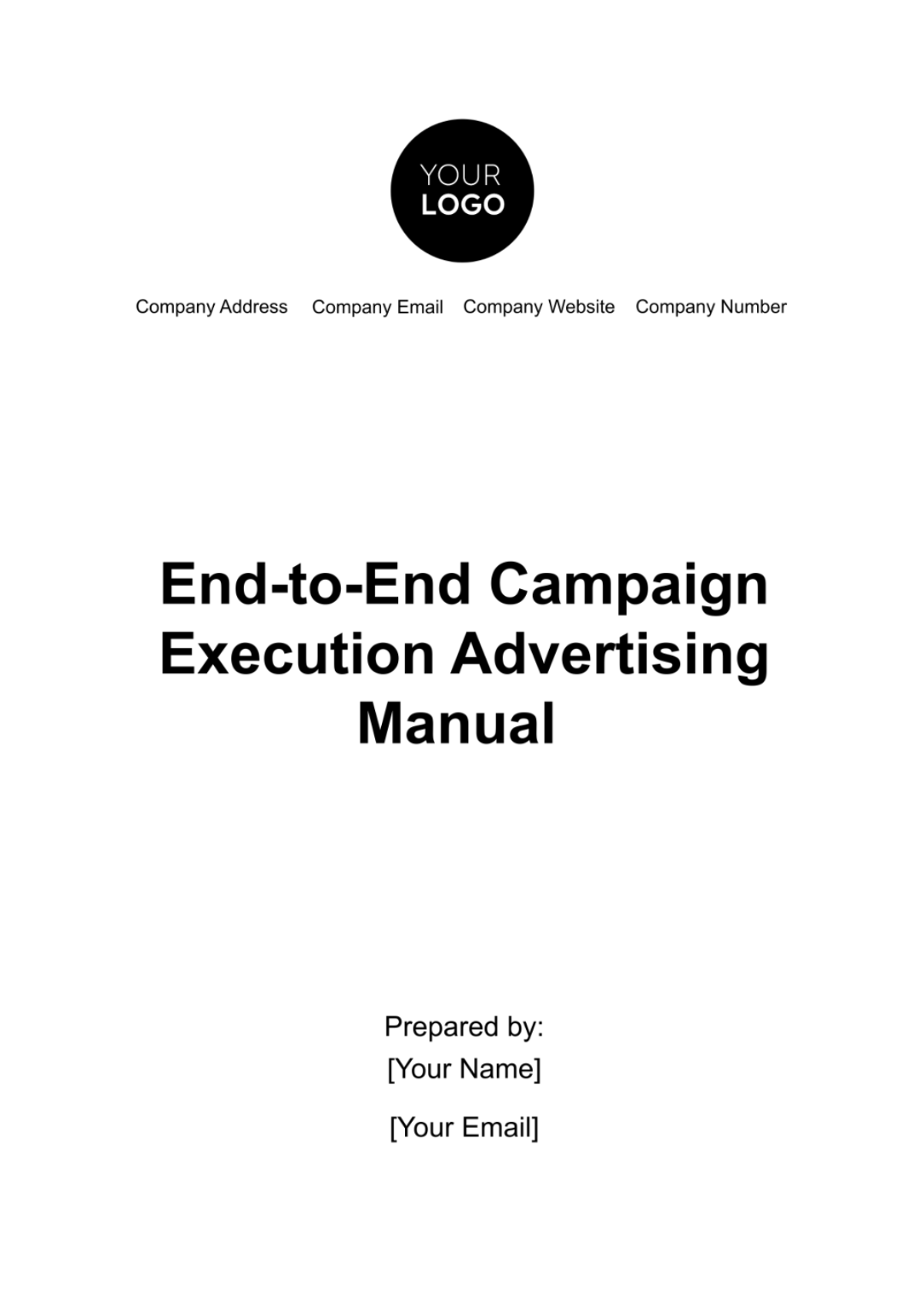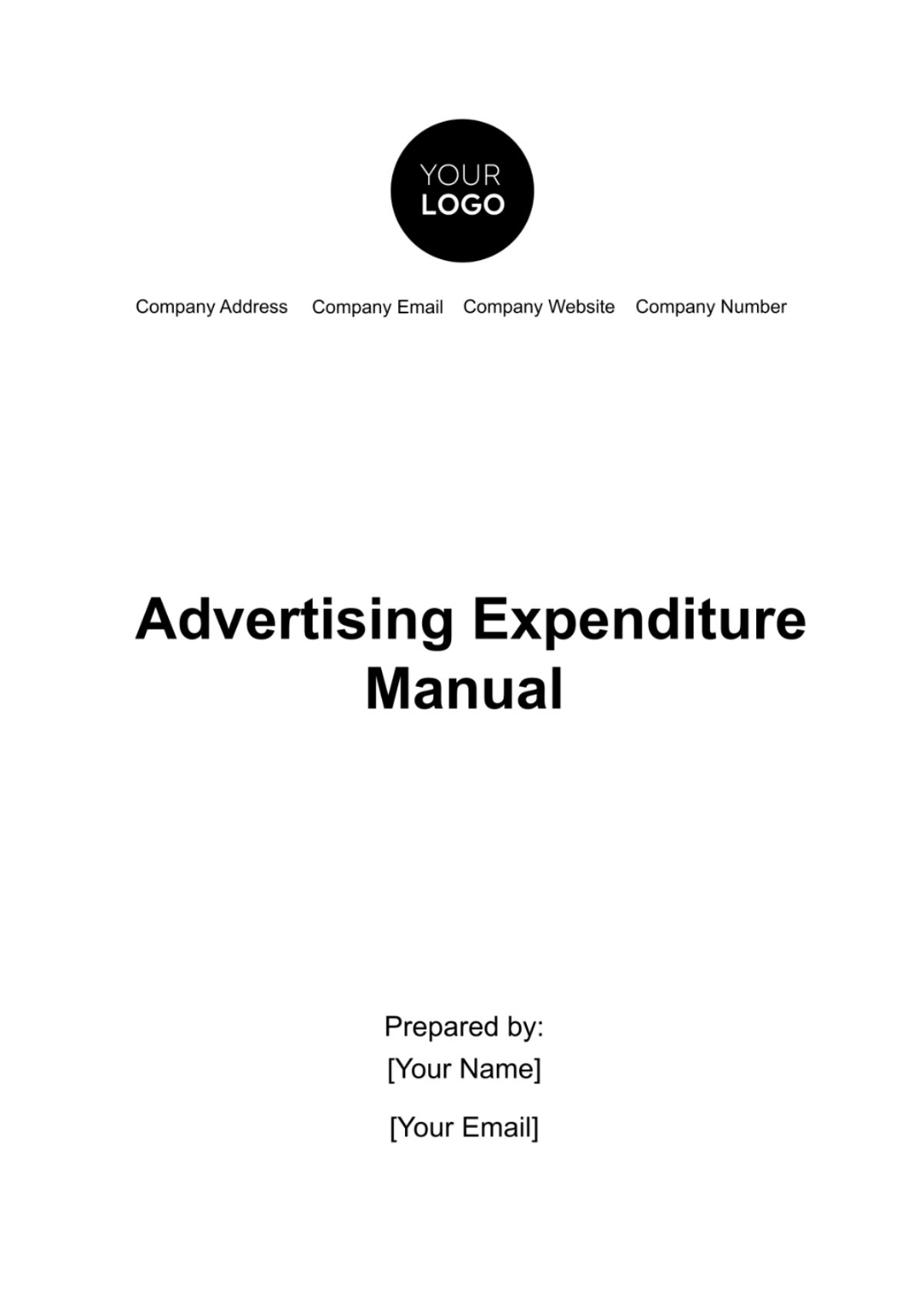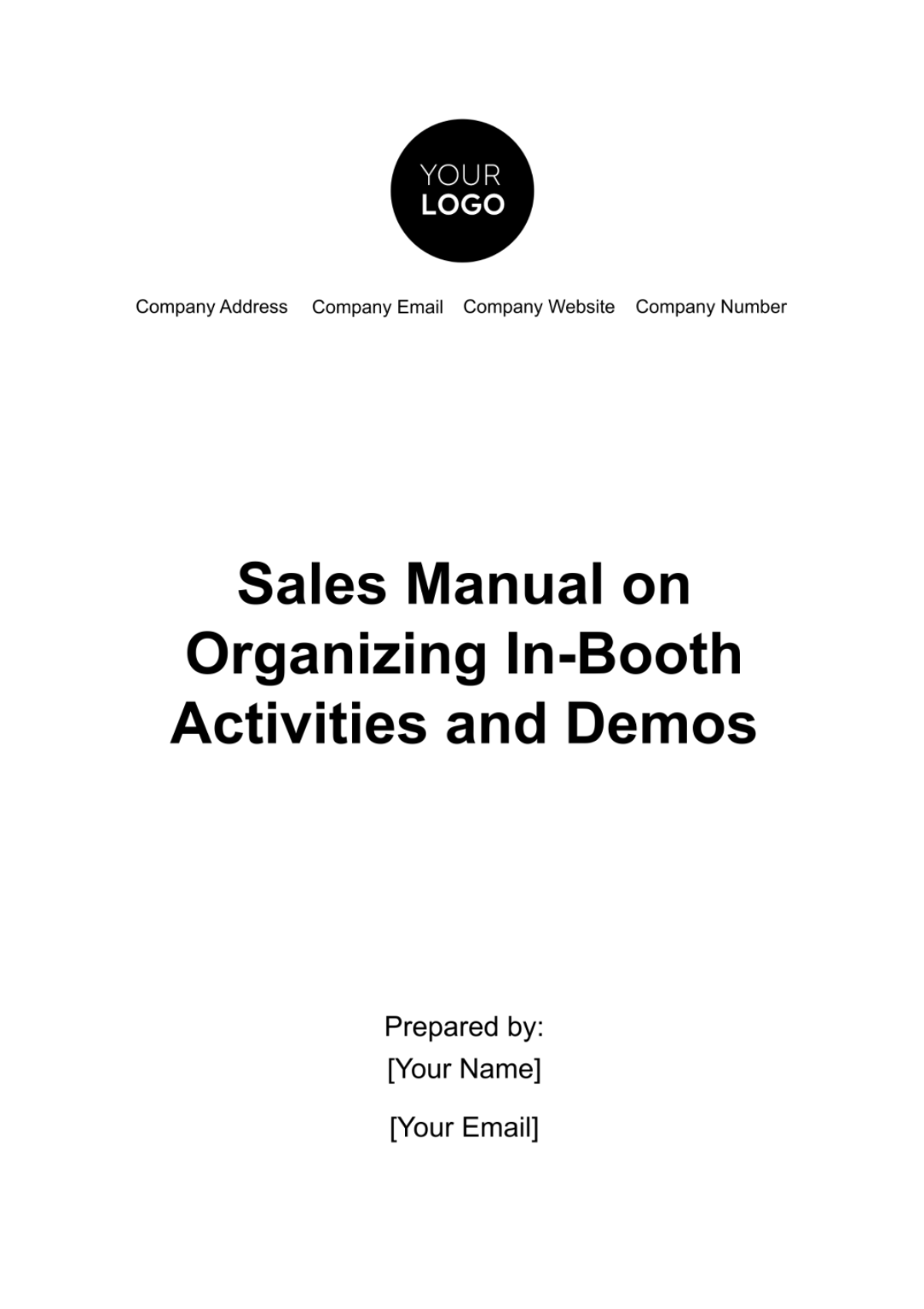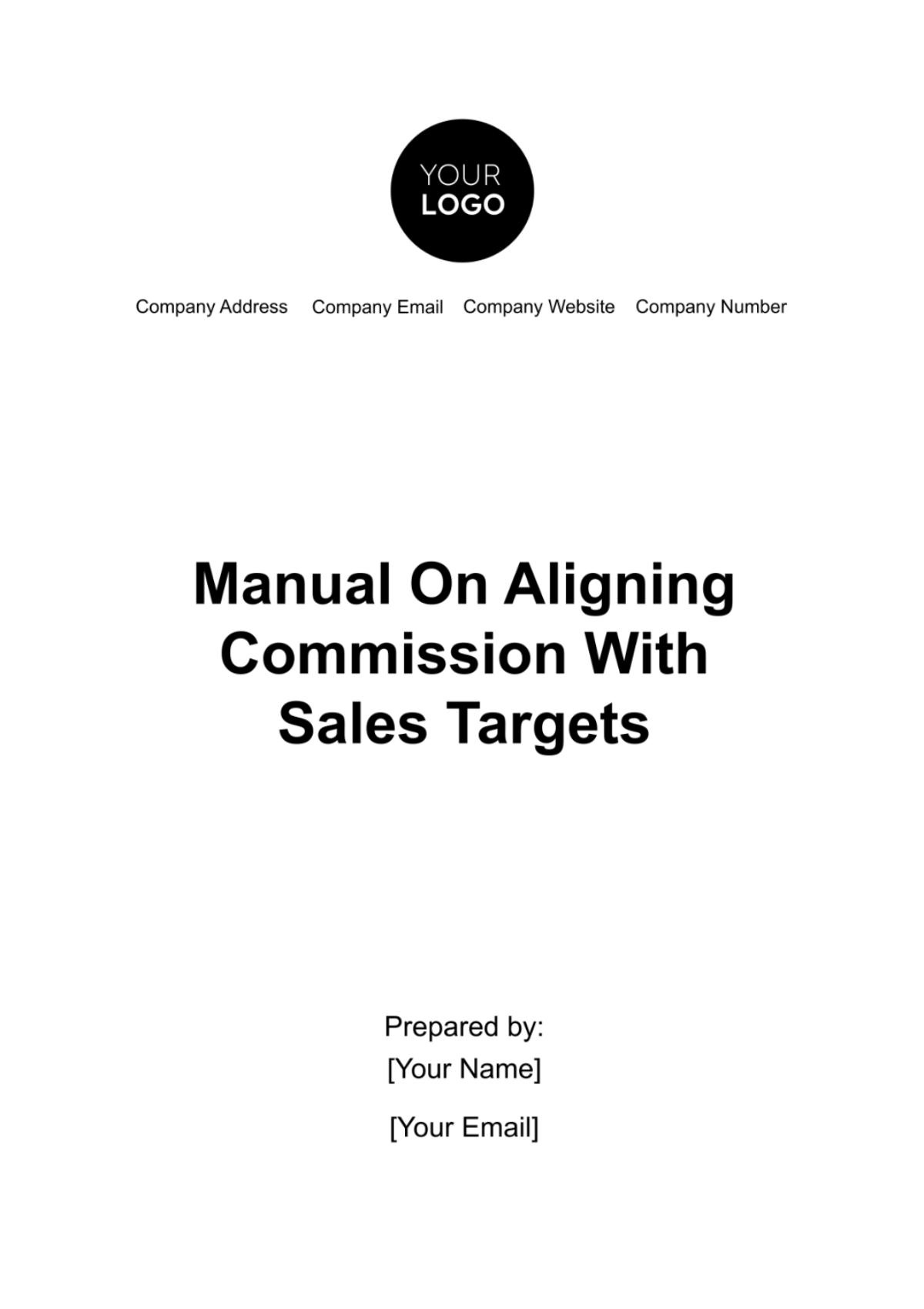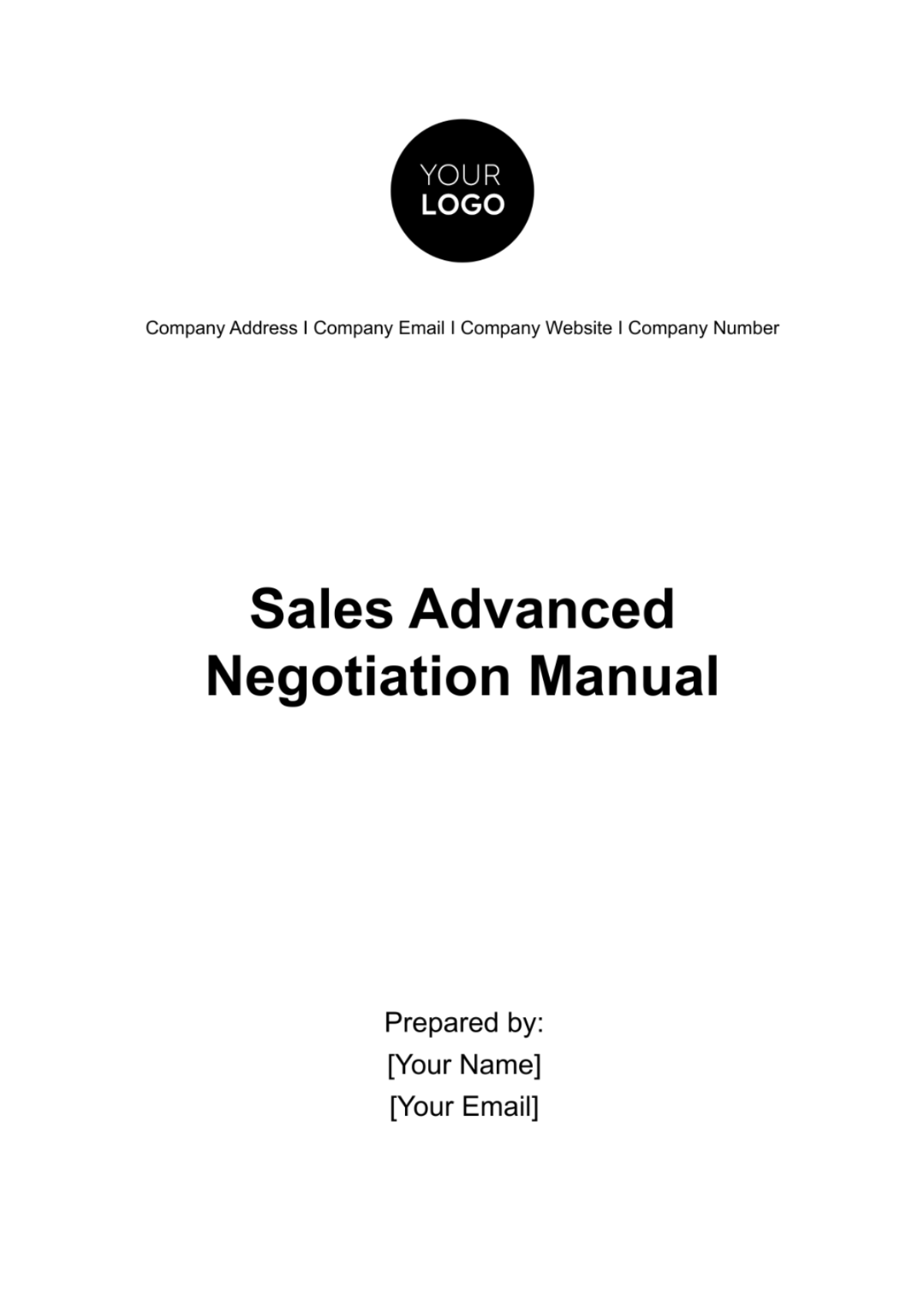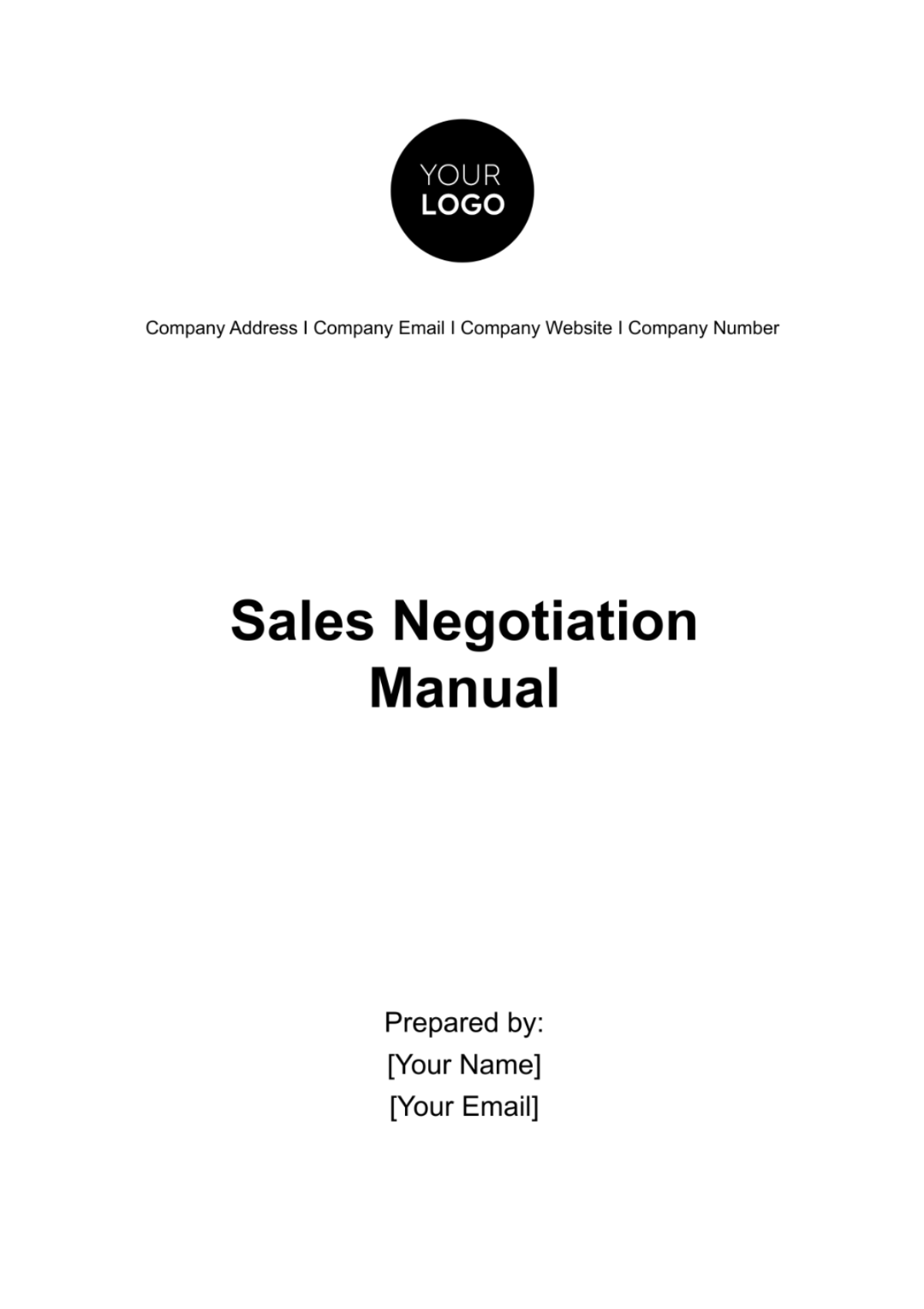Sales Manual on Handling Rejected Deals
1. Executive Summary
This comprehensive "Sales Manual on Handling Rejected Deals" serves as an essential resource for sales professionals seeking to navigate the challenging terrain of rejected deals. Rejections are an inherent part of the sales process, and how they are managed can significantly impact sales success. This manual is designed to equip sales teams with the strategies, techniques, and insights necessary to transform rejected deals into future opportunities.
In the dynamic and competitive world of sales, it's not uncommon for sales professionals to encounter prospects who decline their offers. These rejections may result from various factors, including budget constraints, misalignment with prospect needs, or objections regarding pricing, among others. However, these rejections should not be viewed as dead ends. Instead, they represent potential paths to future successes.
This document delves into various aspects of handling rejected deals, offering practical guidance and actionable steps to overcome rejection and turn it into an advantage. From understanding the reasons behind rejections to refining sales approaches, this manual provides a holistic approach to dealing with rejection.
Here's a glimpse of what this manual covers:
Understanding Rejection: This section explores the reasons behind rejections and the importance of a positive mindset. It emphasizes that rejection is a stepping stone to growth and improvement.
Learning from Rejection: Learn how to analyze rejected deals, identify patterns, and extract valuable lessons from each rejection. The power of self-assessment and feedback is highlighted.
Adjusting the Approach: Discover how to adjust your sales approach after a rejection, including reframing the value proposition, targeting different prospect needs, and revisiting pricing and negotiation strategies.
Re-Engaging the Prospect: Timing is crucial when re-engaging with a prospect who has previously rejected an offer. Craft a thoughtful reconnection message that addresses initial concerns, highlights adjustments, and reaffirms your commitment to their success.
Maintaining Positivity: This section emphasizes the importance of maintaining a positive attitude and embracing a growth mindset. It encourages sales professionals to view rejection as an opportunity for learning and self-improvement.
Learning and Growth: Post-rejection self-assessment and ongoing training and skill development are essential for continued success in the face of rejection.
Monitoring and Analytics: Key performance indicators, data analysis, and feedback loops play a vital role in measuring the effectiveness of rejection-handling strategies.
By mastering the principles and strategies outlined in this manual, sales professionals will be better equipped to navigate the complexities of the sales landscape and turn rejections into valuable stepping stones toward success. With the right mindset, skills, and tactics, rejected deals can evolve into long-term, fruitful relationships with prospects and clients, ultimately contributing to increased sales revenue and improved sales performance.
2. Introduction
Facing rejection in sales is a common occurrence, and it's crucial to approach these situations with resilience and a proactive mindset. This extended Sales Manual aims to provide a comprehensive guide to handling rejected deals, with an emphasis on in-depth analysis, self-improvement, and strategies for successful re-engagement.
Purpose of this Guide
The purpose of this document is to provide a comprehensive guide for sales professionals on how to effectively handle and learn from rejected deals. Rejections are an integral part of the sales journey, and it is essential to approach them with a growth-oriented mindset. This guide aims to fulfill the following purposes:
Understanding Rejections: To help sales professionals understand the various reasons for deal rejections and common rejection scenarios they may encounter.
Post-Rejection Assessment: To guide sales professionals on how to analyze rejections, seek feedback, and make strategic assessments for future sales efforts.
Adjusting the Approach: To provide strategies for reframing the value proposition, targeting different needs, and adjusting pricing and negotiation approaches based on the rejection feedback.
Re-Engaging the Prospect: To emphasize the importance of timing and crafting reconnection messages that address initial concerns and convey a commitment to the prospect's success.
Maintaining Positivity: To offer guidance on dealing with rejection emotionally and adopting a growth mindset for personal and professional development.
Learning and Growth: To encourage post-rejection self-assessment and continuous training and skill development to enhance sales performance.
3. Understanding Rejections
Reasons for Rejections
Understanding the reasons behind deal rejections is vital for refining your sales approach. Rejections can occur for various reasons, such as:
Reason | Description |
|---|---|
Budget Constraints | The prospect may have budgetary limitations that prevent them from making a purchase. |
Misaligned Expectations | The prospect's expectations might not align with what your product or service offers. |
Competitive Alternatives | The prospect could have found a competing solution they believe better fits their needs. |
Timing Issues | Rejections may be a result of poor timing, with the prospect not being ready to commit. |
Unresolved Objections | Unaddressed objections or concerns can lead to rejection. |
Lack of Trust or Rapport | Establishing trust is pivotal, and a lack of it can lead to rejections. |
Common Rejection Scenarios
Rejection scenarios can vary, but common ones include:
Price Objections: Prospects may perceive your product or service as too expensive. Example: A prospect rejects a software subscription due to high costs.
Features and Benefits Misalignment: The prospect may not see the features or benefits that cater to their specific needs. Example: A potential customer rejects a CRM software because it lacks a feature they require.
Competitive Alternatives: The prospect discovers a competing product or service that they believe is a better fit for their requirements. Example: A prospect chooses a different supplier for office equipment.
No Perceived Urgency: The prospect does not see an immediate need for your product or service. Example: A potential client delays a marketing campaign contract renewal.
Trust and Credibility Issues: The prospect may have doubts about your brand or your capability to deliver as promised. Example: A prospect hesitates to commit to a long-term consulting contract due to lack of confidence in your firm.
4. Post-Rejection Assessment
Analyzing the Rejection
After facing rejection, perform a comprehensive analysis to gain insights into what went wrong. Key points to consider include:
Specific Factors: Identify the exact factors that led to the rejection. For instance, was it primarily a pricing issue, or were there misaligned expectations?
Unaddressed Objections: Were there objections raised by the prospect that were not sufficiently addressed during the sales process? These unattended concerns can lead to rejections.
Sales Process Evaluation: Consider whether any aspects of your sales process might have contributed to the rejection. This could include inadequate needs assessment or poor rapport building.
Feedback Collection
Whenever feasible, reach out to the prospect for feedback. Constructive feedback can provide valuable insights into areas for improvement. For example, if a prospect rejected a software subscription due to pricing concerns, you can seek feedback on what pricing structure they would have found more appealing.
5. Adjusting the Approach
After a rejection, it's imperative to adapt and refine your approach for future deals. This adjustment should encompass several critical aspects:
Reframing the Value Proposition
Reevaluation: Take a close look at how you present the value of your offering. Ensure that your value proposition is not only clear but also highly persuasive. It should directly address the prospect's unique needs and pain points. For instance, if a prospect rejected your marketing services because they perceived the pricing as too high, consider restructuring your pitch.
Highlight the long-term return on investment (ROI) they can expect from your services. Use data and case studies to demonstrate the value your services provide in comparison to the cost.
Clear Benefits: Clearly articulate the benefits your prospect will gain from your product or service. Show them how your offering solves their specific challenges, improves efficiency, or enhances their competitive edge. If a prospect rejects your software solution, emphasize how your software streamlines their operations, reduces costs, or increases productivity.
Targeting Different Needs
Needs Assessment: If the initial value proposition didn't align with the prospect's needs, it's time to reevaluate your approach. Consider conducting a thorough needs assessment to understand their specific pain points and objectives. Identify areas where your offering can make a meaningful impact.
For instance, if a prospect rejects your web design services because they already have a website, focus your next pitch on improving their existing site. Highlight how your redesign will enhance user experience, increase conversion rates, and align with their evolving business goals.
Customization: Tailor your approach to meet the prospect's specific needs. Show that you've taken the time to understand their unique requirements and have crafted a solution that directly addresses their challenges.
For example, if a prospect rejects your consulting services, offer a customized consulting plan that aligns with their immediate strategic goals. Provide a clear roadmap for how your services will lead to measurable improvements in their business.
Price and Negotiation Strategies
Reevaluation of Pricing: If rejections are primarily due to price objections, it's essential to reassess your pricing strategy. Consider how you can make your offering more budget-friendly without compromising profitability. Explore options such as more flexible pricing plans, discounts, or bundled services.
For example, if a prospect rejects a long-term software subscription due to budget constraints, offer a short-term, cost-effective plan to meet their immediate needs. Highlight the cost-efficiency and scalability of your software.
Negotiation Flexibility: Be open to negotiations and flexibility in your pricing and contract terms. Show a willingness to work with the prospect to find a solution that fits their budget while still delivering value. If a prospect rejects your marketing services due to budget limitations, offer a phased approach where they can start with essential services and gradually scale up as they see results.
6. Re-Engaging the Prospect
Timing is Key
Strategic Patience: Re-engaging a prospect after a rejection requires strategic patience. Avoid rushing back immediately after the rejection. Give the prospect ample time to reconsider their decision or reassess their needs. Rushing back too soon can be counterproductive. For instance, if a potential client rejected a proposal for your advertising services, wait a few weeks before initiating re-engagement. During this time, they may gain a deeper appreciation for the value of your services.
Recognition of Their Timeline: Consider the prospect's decision-making timeline. If you're aware that their budget cycle or project milestones align with a particular time of year, plan your re-engagement accordingly. This demonstrates that you respect their schedule and are committed to meeting their needs on their terms.
Crafting a Reconnection Message
Addressing Initial Concerns: In your reconnection message, directly address the prospect's initial concerns or objections. Acknowledge the reasons for the rejection and present a clear response to those concerns. For example, if a prospect previously rejected your graphic design services due to concerns about project timelines, your reconnection message can highlight your ability to meet tight deadlines and showcase successful projects delivered on time.
Highlighting Adjustments: Emphasize any adjustments or enhancements you've made based on the rejection feedback. Whether it's offering more flexible pricing options, refining your service, or providing additional support, show that you've listened to their feedback and taken action to improve your offering.
Commitment to Success: Convey your commitment to the prospect's success. Reiterate that your goal is to help them achieve their objectives and overcome their challenges. Express your dedication to working closely with them to ensure a positive outcome. For example, if a prospect previously rejected your IT support services, your reconnection message can stress your commitment to providing round-the-clock support and ensuring minimal downtime for their operations.
7. Maintaining Positivity
Dealing with Rejection Emotionally
Rejection can be emotionally challenging, and it's vital for sales professionals to address these feelings constructively. It's not just about making tactical adjustments; it's also about managing the emotional impact. Here are some strategies to consider:
Stay Positive: While it's natural to feel disappointed after a rejection, it's crucial to maintain a positive outlook. Understand that rejection is part of the sales journey, and even the most successful sales professionals face it. By keeping a positive attitude, you can better navigate through challenging moments.
Maintain Confidence: Rejection should not erode your confidence. It's an opportunity to strengthen your self-belief and determination. Remember your past successes and acknowledge that each rejection brings you one step closer to your next triumph.
Take Breaks: If you find yourself emotionally affected by a rejected deal, it's perfectly acceptable to take a break. Stepping away from the situation temporarily can help you recharge and regain your positivity. It's essential to return to your sales efforts with renewed enthusiasm.
The Power of a Growth Mindset
Embracing a growth mindset can significantly influence how you approach and respond to rejection. Instead of viewing rejection as a personal failure, a growth mindset encourages you to see it as an opportunity to learn, improve, and grow.
Here's how you can apply a growth mindset:
View Rejection as an Opportunity: When a prospect rejects your offer, see it as a chance to enhance your product or service based on the feedback received. For example, if a potential customer rejects your SEO services, you can view it as an opportunity to fine-tune your service to better meet their unique needs.
Continuous Improvement: A growth mindset promotes the idea of continuous improvement. It encourages you to seek out areas where you can develop your skills, refine your approach, and become a more effective sales professional. Rejection becomes a stepping stone to your personal and professional growth.
Resilience: A growth mindset fosters resilience. It helps you bounce back from rejections with renewed determination. You're more likely to persevere in the face of challenges and setbacks, knowing that each rejection is a valuable part of your journey towards success.
8. Learning and Growth
Post-Rejection Self-Assessment
After experiencing a rejection, it's essential to take time for self-assessment. Reflect on what you've learned from the rejection and consider how you can apply these lessons to become a more effective sales professional. Here's how this self-assessment process can work:
Reflect on the Rejection: Analyze the specific reasons for the rejection. In the case of a potential customer rejecting your proposal for digital marketing services, assess whether your pitch adequately addressed their unique needs. Did you overlook certain pain points, or were there objections that you could have better addressed?
Identify Areas for Improvement: Based on your analysis, pinpoint areas where you can improve. This might include enhancing your product knowledge, refining your value proposition, or becoming more adept at objection handling. For instance, if the rejection was due to objections you struggled to address, it's a sign that you need to enhance your objection-handling skills.
Set Clear Improvement Goals: Establish specific improvement goals based on your self-assessment. Define what actions you'll take to address the areas you've identified for improvement. Your goals might include attending objection-handling training sessions or refining your sales presentation.
Training and Skill Development
Continuous learning and skill development are pivotal in the sales profession. When rejections commonly relate to specific objections or skill gaps, investing in training can significantly enhance your sales performance. Here's how to approach training and skill development:
Identify Knowledge Gaps: Begin by identifying specific knowledge gaps or skill deficiencies that may have contributed to the rejection. For example, if a prospect often rejects your offer due to concerns about data security, it may signal a need for a deeper understanding of your product's security features.
Invest in Relevant Training: Seek out training programs, courses, or resources that can address the identified knowledge gaps. For instance, you can enroll in a data security certification program to enhance your understanding of the subject.
Apply Newly Acquired Skills: Once you've acquired new knowledge and skills through training, make a concerted effort to apply them in your sales efforts. If you've improved your objection-handling skills through training, practice addressing objections effectively in your interactions with prospects.
Measure the Impact: Evaluate the impact of your training and skill development efforts. Determine whether the rejections related to the addressed knowledge gaps have decreased. Use performance metrics to gauge the effectiveness of your newly acquired skills.
9. Conclusion
In conclusion, handling rejected deals is a critical aspect of a sales professional's journey. Rejections need not signify failure; instead, they present opportunities for growth and future success. By understanding rejection factors, adjusting your approach, maintaining a positive mindset, and continuing to learn and improve, you can turn rejections into stepping stones toward your next successful deal. Each rejection brings you one step closer to your next triumph, and embracing this mindset is key to achieving sales success.
Sales Templates @ Template.net


